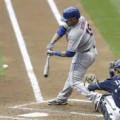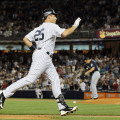By William Coppola
What a race, what a finish, what a crazy turn of events! The 145th running of the Kentucky Derby is history not because of who won but how it was won. By now we all know about the controversy surrounding its outcome. The first-ever racing disqualification of a Derby winner was declared in a room seven floors above the track. Using mind blowing state of the art video technology, the stewards deliberated for 22 minuets before the crowd of 150,729 at Churchill Downs and the rest of he world were told what had happened and who the winner was.
Sound familiar? I’m referring to what we have become used to in Major League Baseball today. The interesting thing to me is that just like in baseball, there was a complaint by the participants who requested that officials somewhere in a distant place review video and get it right. That they did and again just like in baseball all those who bet on the winner of that review were very happy and all those who lost their bet booed the outcome.
Now there is no comparison between most fans in baseball and those who wager on the ponies. Baseball fans don’t get dressed up in $1000 outfits with outrageous garish headgear and sip “Mint Juleps.” What the heck is a “Mint Julep” anyway? No we go to watch our sport in everyday real people cloths and drink beer. You know, the workman’s beverage of choice.
I have to admit though, we wouldn’t have replay in baseball if it wasn’t for the need to get it right and whether or not anyone wants to admit it in the offices of MLB, there is some need to satisfy those who legally bet on baseball.
I know, I have brought this up numerous times but the fact of the matter is that the game worked so well for the past 120 years without replay. I understand that some change is good in all sports and there is a place for the use of video replay. The average is about 1.5 min. from challenge to ruling.
In 2017 MLB ruled that the replay studio officials had just two minutes to give a ruling on a challenged play. So it doesn’t delay the game that much. Besides, who cares if the game takes four hours. Where you going? I think of it like this, if I just spent a lot of money to fly first class, I could care less if the plane had to circle the airport for an extra hour. Like keep the drinks coming. I want my moneys worth.
But enough of that. Here are some things that are being done by the Independent Atlantic League in conjunction with MLB. Together, they have a working agreement for the next three years, to experiment with possible changes to how the game is played. They start with the home plate umpire being assisted in calling balls and strikes by a “TrackMan” radar tracking system. No mound visits permitted by coaches or players except for pitching changes or injury.
Pitchers must face three batters or reach the end of an inning before they can exit, unless injured. Increase size of bases, except home, from 15- to- 18 inches. Require two fielders to be on either side of second base when pitch is released. And this is my favorite, extend the pitching rubber 24 inches farther from the plate. They already have a rule that puts a runner on second base to start the 10th inning, like in amateur baseball when there are no lights.
Phew, that’s change on steroids. Hey speaking of steroids, wasn’t it smart of MLB to crack down on steroid use among players and then juice up he ball? Brilliant!
The rules used to play the game today were evolved directly from the rules set down by Alexander Cartwright for a game played in 1846 at Elysian Fields in Hoboken. That’s right, Abner Doubleday was not the inventor of baseball. Hey, if we want to get everything right, let’s start with that.
Wonder what Mr. Cartwright would say about his game rules today and how they have evolved?

















Follow Us